Isfahan Mosques You Should Visit
Isfahan has a long history of being renowned for its abundance of mosques.
A client of Omar b constructed the first significant mosque in Isfahan. al-Ḵaṭṭāb under the Caliphate of Imam Ali b. Abi Taleb (r. 656-61), according to Abu Noaym of Isfahan (I, p. 17).
It may be claimed that the Isfahan mosques have served as a significant conduit for the city's inhabitants'conduit for the city's inhabitants' history, culture, art, and religion.
Isfahan's population practices Shia Islam as their primary religion, although there are also Armenian, Jewish, Zoroastrian, and other religious minorities in the city. In the past several decades, Isfahan has constructed over 53 mosques. This post will only discuss the top 10 mosques in Isfahan in terms of visitor volume.
Top 10 Isfahan Mosques
- Isfahan Jame Mosque
- Sheikh Lotfollah Mosque
- Shah Mosque (Abbasi Great Mosque)
- Hakim Mosque (Masjed-E Hakim)
- Dashti Mosque
- Seyed Mosque
- Lonban Mosque
- Ilchi Mosque
- Ali Qoli Agha Mosque
- Qotbieh Mosque
Isfahan Mosques
Isfahan welcomes the millions of tourists and admirers of architecture who go there each year with the utmost grace. The Sioseh Pol Bridge, Khajo Bridge, Chehel Sotoun, Ali Qapu Palace, and Isfahan Jame Mosque are just a few of the Isfahan sites that are listed on the UNESCO World Heritage List. Another attraction in this city is the magnificent mosques, which feature genuine Iranian architecture. As you go through the city's streets, you will see mosques with Iranian-Islamic architectural beauty everywhere.
1. Isfahan Jame Mosque
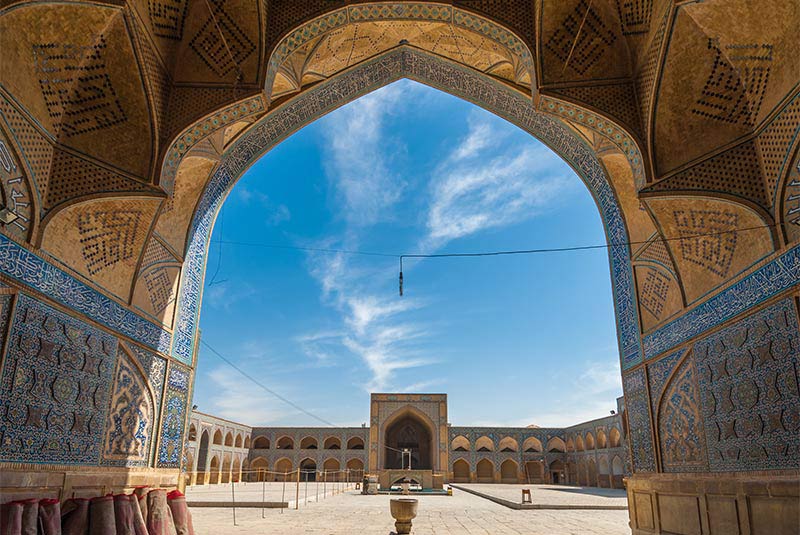
One of Iran's most significant and historic religious structures is the Jame Mosque in Isfahan. The Nezam ol-Molk dome, the Taj ol-Molk dome, the Four-Iwan courtyard and its round chapels, the Mozaffari school, and the Al-Jayto altar are just a few of the many components of this mosque, which is located northeast of Isfahan and right next to the old square. Each of these features represents the development of Persian architectural art during a specific period.
According to historical sources, the Isfahan Grand Mosque (Jame'a Mosque of Isfahan or Masjid-e Jameh) was constructed over the ruins of an earlier mosque that Arabs from Tehran Village in Isfahan erected in Judea in the second century (Hijri). The first mosque was built on the ruins of buildings from the late Sassanid (Sasanian) period.
Another noteworthy element of the mosque is its interaction with the city. The mosque is bordered on all sides by other buildings and walls and is situated in the historic city's center. Due to its massive size and numerous entrances, it acted as a pedestrian hub for the city's arterial network of streets. In addition to serving as a place of worship, the mosque also served as a center for commerce and public transit. It was not a solitary sacred site.
Shah Abbas I, a Safavid dynasty king who decided to relocate his Empire's capital from Qazvin to Isfahan in the late 16th century, built a brand-new imperial and commercial hub distant from the former Seljuk metropolis. Although Isfahan's reputation among early modern cities was revived by the new plaza and the structures surrounding it, which are known for their delicate embellishments, the significance of the Seljuk mosque and its impact on the populace was not overlooked. Nowhere is this connection between the political, economic, social, and religious activity more evident than at the covered market in Isfahan. The Great Mosque of Isfahan connects the Safavid center to the city's historic core by a long, winding road and towering brick vaulting.
| Learn more: Iranian Traditional Houses
2. Sheikh Lotfollah Mosque
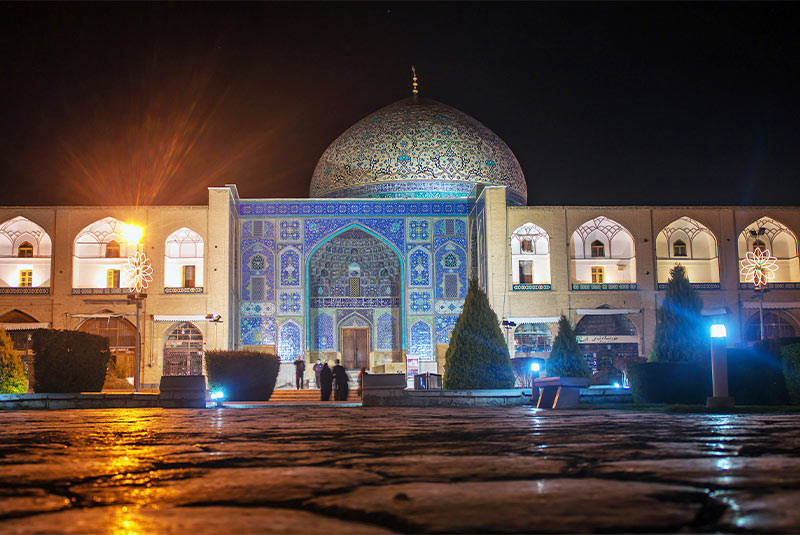
One of the oldest and most well-known mosques in Isfahan, Sheikh Lotfollah Mosque (1602–1619 AD), is part of the Safavid-era historical Naqsh Jahan Square complex. Mohammad Reza Esfahani, one of the most renowned architects of the time, constructed this mosque, which is a masterpiece of Hijri architecture and tiling from the 11th century. Shah Abbas, I ordered the construction of Sheikh Lotfollah Mosque, which is situated next to Shah Mosque and on the eastern side of Naqsh Jahan Square in front of the Ali Qapo Mansion. This temple, constructed as a tribute to Sheikh Lotfollah Misi, draws many visitors each year.
The mosque's altar is the most stunning feature of this architectural masterpiece; it is skillfully and delicately tiled with numerous carvings, producing a colorful structure that communicates art and elegance to wow every visitor. If you are passionate about architecture, you should not miss Sheikh Lotfollah Mosque since it is so magnificent that even ordinary people can understand it.
Sheikh Lotfollah Mosque is smaller than Shah Mosque and lacks minarets because it was intended to be a private mosque. In contrast to the most significant Islamic constructions, Naqsh-e Jahan Square does not face Mecca, so Shaykh Bahai, the project's primary architect, had difficulty in overcoming when creating the square's two mosques. Sheikh Lotfollah Mosque, like Imam Mosque, has an entrance portal that turns right, requiring visitors to face Mecca as they enter the mosque.
The interior tiles and paintings were designed by renowned Iranian artist Reza Abbasi, and their caliber and beauty are far beyond anything before being designed in Iran. The mosque's walls, dome, and doors are embellished with so-called seven-color tiles, calligraphy, verses from the Quran, Imams' names, and poetry.
The mosque's opening hours are determined by the times set aside for prayer. Therefore, the Sheikh Lotfollah Mosque is open from 9 am to 11:30 and 1 pm to 4 in the winter and from 9 am to 12:30 pm and 2 pm to 6:30 in the summer. Take a stroll across Naqsh-e Jahan Square after touring the mosque. The sun setting in the evening is seen to be the ideal time to visit the area since it illuminates its domes.
| Read more: 16 Most Beautiful Mosques You Should Visit
3. Shah Mosque (Abbasi Great Mosque)
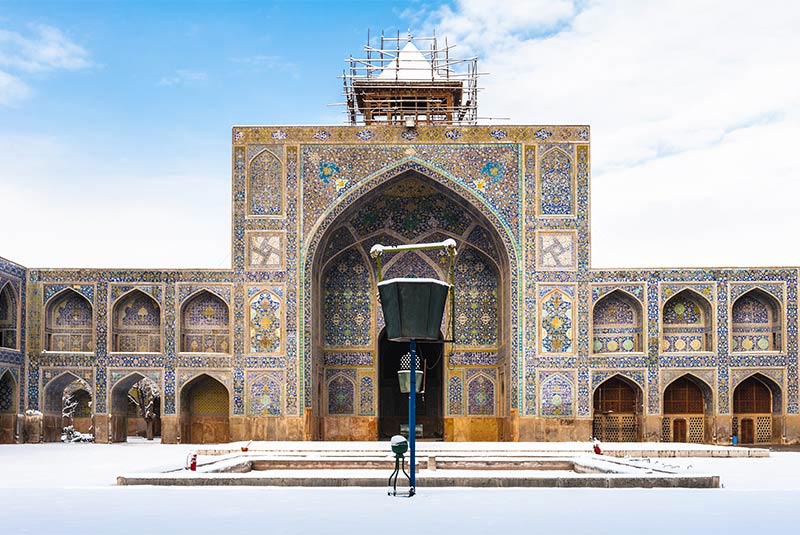
On the southern side of Naghsh-e Jahan Square stands the Shah Mosque (Imam Mosque of Isfahan). Shah Abbas I of Persia ordered its construction during the Safavid era. One of the greatest examples of Islamic-era Persian architecture is this mosque. Together with Naghsh-e Jahan Square, the Royal Mosque of Isfahan is listed as a UNESCO World Heritage Site. Its splendor is primarily a result of the elegance of its seven-color mosaic tiles and calligraphic inscriptions.
"The mosque is shown on the back of the Iranian banknote worth 20,000 rials."
Shah Abbas ordered the construction of the Imam Mosque between 1611 and 1629 as a component of the Naqsh-e Jahan Square complex. Shaykh Bahai, the project's principal architect, was tasked with creating a mosque to represent the role played by the clergy in the Empire's political system.
The ancient Jameh Mosque was supposed to be replaced with the Imam Mosque for Friday prayers. Shah Abbas wanted the mosque finished before his passing; therefore, the building period had to be cut short to accommodate Shaykh Bahai's plans to erect two schools on the mosque's property. The Imam Mosque eventually emerged as the magnificent structure with the largest dome in the city, although work on it was only completed a few months after Shah's passing.
The Shah Mosque comprises two buildings: the main mosque building, which has a large dome and minarets, and a stunning entry gate with two minarets. They are separated by the mosque yard. The entryway is designed like an iwan, which is a distinctive element of Persian architecture from the Seljuk and Safavid eras.
The Abbasi Great Mosque's odd orientation is one of its most notable features. While most significant structures were oriented toward Mecca, the mosque's entrance points in a different direction at that time. However, one must bend slightly to the right as the portal directs him after entering the mosque's entry gate to emerge in the courtyard facing Mecca. Using this approach, the mosque's central dome and entrance are both equally visible from the plaza and do not obstruct one another's views.
The mosque's acoustic qualities are a distinctive Iranian architectural element. Anyone inside will be able to hear anyone speaking under the dome plainly. The mosque became known for its distinctive blue-tiled walls inside and out.
| Discover: Naqsh-e Rustam | Ancient Treasures & Zoroastrian Legacy
4. Hakim Mosque (Masjid-i Hakim)
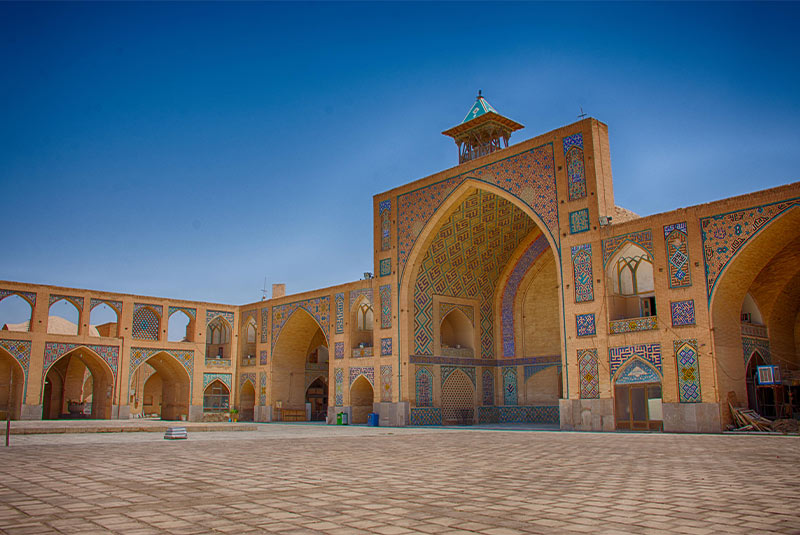
One of the earliest mosques in Iran's Isfahan is the Hakim Mosque. It was finished in the middle of the 17th century, during the Safavid dynasty, and is named for Mohammad-Davud Khan Hakim, a royal physician. He provided funding for the building project.
Hakim Mosque, or Jurjir Mosque, is one of the four porch mosques from the end of the Safavid era, located in the old Bab al-Dasht area of Isfahan at the end of Rangarzan Bazaar. This mosque was built on the site of the ruins of the Jame Deilami Mosque of Jurgir or Ismail bin Ebad Mosque from the 4th century Hijri.
The mosque's "standard four-iwan layout and a two-story arcade" were still there when it was built between 1656 and 1663. However, compared to those built under Abbas I, it also featured a more straightforward structural design and brick and tile surface (r. 1588-1629).
Mohammad Reza Emami, a well-known calligrapher of the Safavid dynasty, penned the inscriptions on the fronts and porches of this mosque. They are dated from 1067 to 1073 Hijri.
The mosque's eastern doorway features historical inscriptions and tiled ornamentation. On an azure tile backdrop, the north portal's inscription is written in white Thuluth handwriting. The mosque's courtyard is spacious, and the calligraphy and tiles on its exterior are exquisite.
| Suggestion: Chehel Sotoun Palace | Isfahan's Timeless Marvel
5. Dashti Mosque
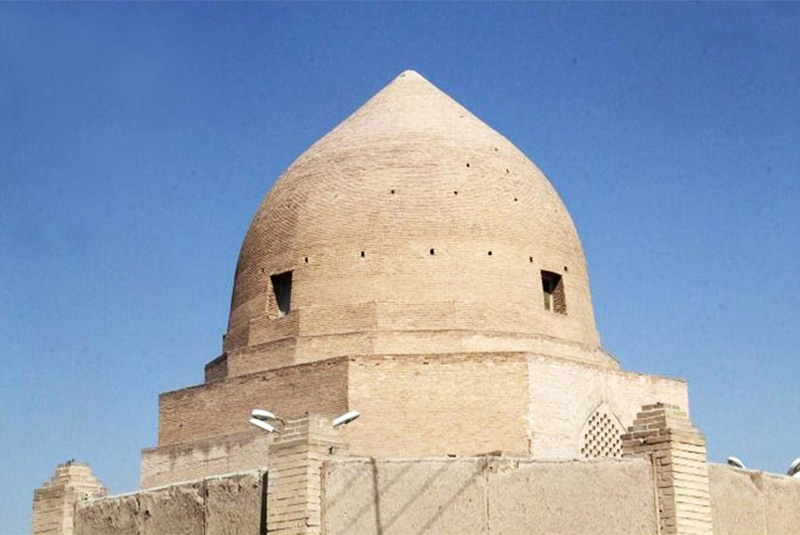
Dashti mosque dates back to the 8th century of Hijri and is located on the southern side of the Zayandeh-Rood River and 18 kilometers east of Isfahan. The Jame Dashti Mosque's map currently shows it as a square space with a simple design. This chamber is square in design and begins with a long entryway on the north side and finishes with the mosque's brick altar on the south side. Tourists may enter Jame Dashti Mosque by the front door of the building, and when they do, they will enter a porch that is 10 meters wide and 4.5 meters deep.
Consider the dome of the home, which has been turned into a circle with eight enormous arches at the bottom and sixteen little arches at the top, as well as the mosque's other architectural characteristics when you are there. In addition to the skylights, the wooden brackets that once had minarets in the corners but are no longer there can be seen when touring the Jame Dashti Mosque's dome. As you continue to tour the mosque, you will notice spiral stairs in the northern corners of the structure, and the two southern corners of the building also have space for such a staircase.
The mosque does not have an inscription specifying the exact construction year or the architect's name.
| Read more: Pasargadae | Legacy of Cyrus the Great & Ancient City
6. Seyed Mosque
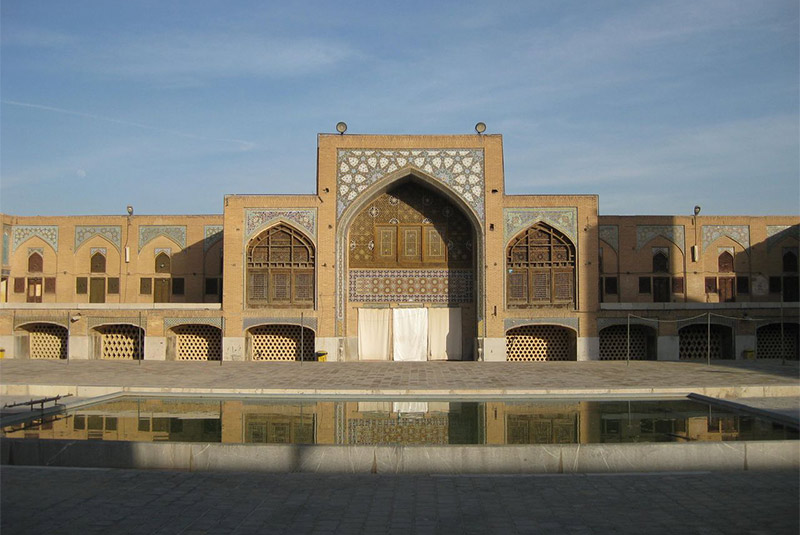
The 8075 square meters Seyed mosque, a 19th-century religious structure, is situated on the same-named street in Isfahan, Iran. According to historical reports, the mosque's property was purchased during the Safavid dynasty under the rule of Shah Sultan Hossein. However, the building was put on hold due to the Afghan invasion. Affluent religious leader Hojjat al-Islam Shafti afterward ordered the mosque during the reign of Mohammad Shah Qajar. Starting in 1825, the building and decoration process took 130 years to complete. This is the largest Qajarid religious structure in Isfahan and the fourth "Jameh Mosque" in Isfahan.
It greatly profited from the thriving Safavid architectural style and the amazing Qajarid ornamental art. The fact that this mosque serves as both a mosque and a school simultaneously is one of the most significant distinctions between it and other mosques in Isfahan. Other mosques, like Jame Abbasi mosque, have a separate space next to the school's structure. However, in the Seyed mosque, no separate space was thought to be necessary for the education of students. As a result, the building's architecture was created to accommodate the students; for instance, vertical sash windows, which are more typical in houses, were used to create a suitable space for them.
The most impressive feature is the mosque's southern side, which is capped by a clock tower and features two columned prayer rooms and an altar with exceptional tile work. Landscapes and floral motifs like those painted by European artists are featured on the tiles. This Qajarid tilework is comparable to that seen in Shiraz's Nasir al-Molk Mosque. During the Iran-Iraq war (1980–1988), some of the tilework was damaged, although it eventually underwent restoration. This mosque has four entrances, with the major one coming from the northern side. The peacock design on the entrance, which represents "Guidance," is its most notable feature.
Other notable buildings at the Seyed Mosque include Hojjat al-Eslam Shafti's lecture hall, a columned room resembling Chehelsotun, and his resting place to the northeast of the mosque.
| Also might be interesting: Top 10 Historical Sites of Iran
7. Lonban Mosque

Lonban Mosque is one of the most magnificent Isfahan mosques associated with the Safavid dynasty, which is situated in the former Lonban area. On top of the ruins of a mosque built in the 8th century (Hijri, A.H.) during the Safavid dynasty, this mosque was constructed. The most stunning aspect of the mosque is its lovely dome, which is accompanied by a little minaret. A location for the call to prayer has been created at the top of the minaret, and Muhammad's name and the names of other Shia Imams are etched on its body.
The mosque's blue dome is adorned with stunning white and khaki flowers and slimy patterns that resemble a carpet. Two inscriptions in this mosque were written by one of the well-known calligraphers, Mohammadreza Emami, in white Tholut lettering on a lapis lazuli backdrop. A "Saqakhana" with four stone pillars and four "Sangabs," two of which were round and two square, can be seen on the eastern side of the Lonban Mosque. All four Sangabs have now been included in Iran's cultural heritage list. Two aged plane trees may be found in the mosque's courtyard.
The mosque's blue dome is adorned with stunning white and khaki flowers and slimy patterns that resemble a carpet. Two inscriptions in this mosque were written by one of the well-known calligraphers, Mohammadreza Emami, in white Tholut lettering on a lapis lazuli backdrop. A "Saqakhana" with four stone pillars and four "Sangabs," two of which were round and two square, can be seen on the eastern side of the Lonban Mosque. All four sengabs have now been included in Iran's cultural heritage list. Two aged plane trees may be found in the mosque's courtyard.
The mosque's pulpit, known as the Minbar Sahib al-Zaman, dated 1114 AH, is one of the most beautiful pulpits of the Safavid era. Until the 11th century, a cemetery was located next to the mosque, where the graves of great people such as Mirza Abu Tarab Khoshnavis, Amir Nizamuddin Khoshnevis son of Abu Tarab, Zainuddin Ali bin Sadroddin Muhammad bin Afzal; Known as En Turke, an Esfahani sage and philosopher who passed away in the year 835 (A.H.) and was buried in this place along with other notables, who belonged to the famous Teymur and Safavid families, and unfortunately, no trace of him remains today. On their vestiges, buildings have been built around the mosque.
| Learn about: Vank Cathedral | Persian & Armenian Cultural Masterpiece
8. Ilchi Mosque
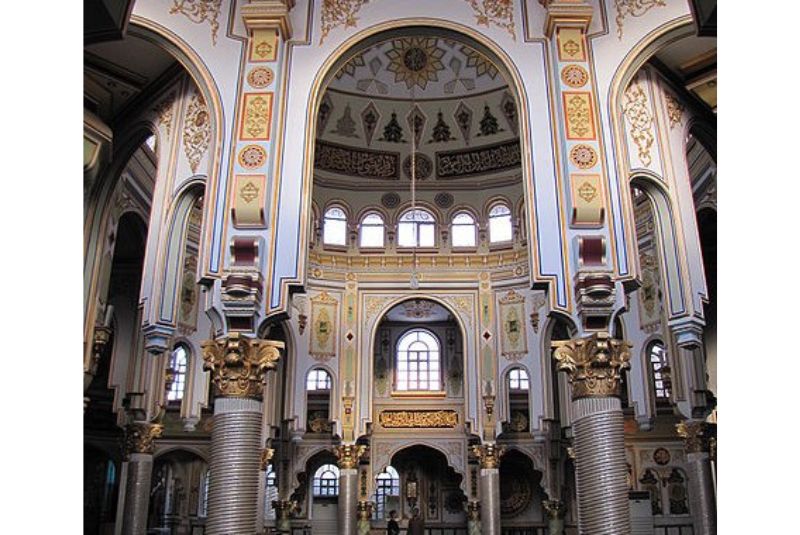
The Ilchi Mosque, constructed under Shah Soleiman Safavid's rule, is one of the most well-known historical structures in the city of Isfahan. This magnificent and gorgeous mosque is situated in Isfahan's old and medieval Ahmad Abad area. The daughter of Hakim Nezamoddin Mohammad, one of the officers in the Shah Soleiman Safavid government, founded the illustrious Ilchi Mosque. Because of his nickname, Ilchi, the mosque has the same name. The architect of the Ilchi school is identified as Mohammad Ali, son of master Ali Beyk in the inscription on the structure, which dates to 1097 A.H.
The Ilchi Mosque is renowned for its intricate and gorgeous tile work and architectural design. A tiny courtyard, a nave, and two altars can be seen inside this mosque, which has three entrances on its north, south, and east sides. This mosque's south porch is larger than the other porches and contains more ornate ornamentation. You can notice several kinds of tiling and masonry lines with checks on this porch. This porch contains a sizable nave and a lovely altar, both of which are encircled by an inscription written in Maqali script and bearing the year 1093 AH. Another inscription is contained within the mihrab (altar) of this altar and is embellished with exquisite calligraphy created by Mohammad Hossein Emami using lines from the Quran. The form of the nave is an asymmetrical quadrilateral.
This exquisite inscription has a blue backdrop and white lines and bears the year 1094 AH. Inside the altar are striking Muqarnase with masonry lines (also known as Ahoopy in Iranian architecture) and Mocárabe in Iberian architecture; muqarnas is a type of decorated vaulting in Islamic architecture). This lovely mosque has a little courtyard and a stunning nave with stone columns that is quite striking. Fifteen meters long by 10 meters broad, this chapel. This mosque has been standing for three centuries despite lacking a dome and other extra areas. The mosque's historic seclusion has been compromised by building around it in recent years. These structures have received much criticism.
| Discover: Tabriz Bazaar Complex | History, Shopping & Culture
9. Ali Qoli Agha Mosque
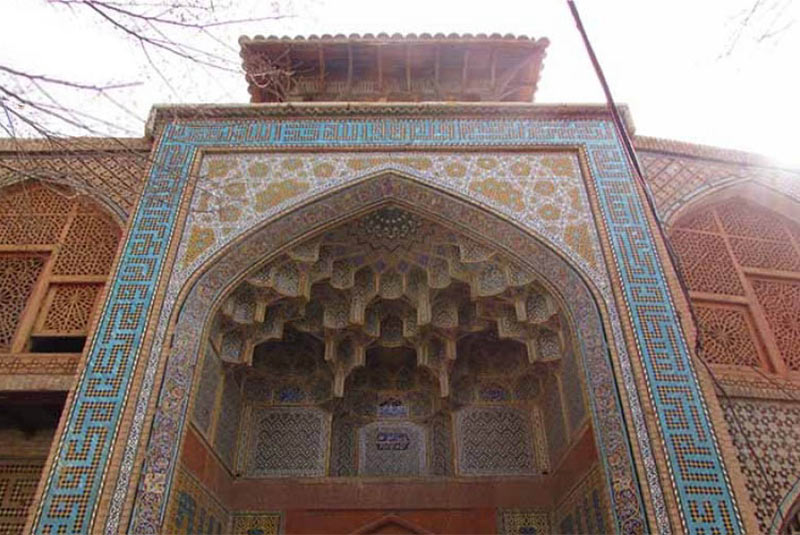
A historical structure from the Safavid period is the Ali Qoli Agha Mosque. During the rule of Shah Sultan Hossein Safavi, Ali Qoli Agha was regarded as one of the nobility. This kind guy and his brother Khosrow Agha constructed structures while they were alive. The Khosrow Agha Bathhouse was constructed with the help of Ali Qoli Agha's brother, and Ali Qoli Agha constructed a complex in the Isfahan area of Bidabad that included a mosque, a market, a bathhouse, and a caravanserai. Even though the majority of these structures are now in disrepair, they are still standing and well-known.
Many lanes, trees, and lovely older homes surround the historical complex and Ali Qoli Agha Mosque, all of which reflect the neighborhood's former splendor. You can notice how the streets around the Ali Qoli Agha Mosque in Isfahan are paved and still have a classic look by glancing at the photos of the mosque and its neighbors.
The porch, front porch, and hall are among the Ali Qoli Agha Mosque's several components. The building's exterior includes pavilions on each side and garlands beside the building. The eaves are covered in yellow tiles with black calligraphy passages from the Quran inscribed. We might mention the muqarnas artworks and the delicate and lovely tile work as some of the mosque's other features. An inscription created by Ali Naghi Emami is inscribed in a brown Tholut script on the mosque's roof. On this stone, the year 1122 AH is inscribed. This inscription also includes the names of Ali Qoli Agha and Shah Sultan Hossein.
There is no pond in the mosque's courtyard, which is made up of a modest rectangular area.
The mosque's porch and altar are on the south side of the structure. This mosque section has unique beauty because of the mosaic tiles and marble stones.
On the eastern side of the courtyard, eight stone columns make up the mosque's nave. Because of its inlaid wooden door, this nave is beautiful, intriguing, and distinctive. We can highlight the distinctive effect of the Chinese knot tiles in this nave among its other embellishments. Poems are written in white over a background of lapis lazuli tiles in the Nastaliq script in the Shabestan inscription. By reading these lyrics, one may infer that this chapel was a later addition to the Ali Qoli Agha Mosque, occurring during the reign of Naser al-Din Shah Qajar in the lunar year 1297. Mohammad Ismail, a tile artisan, and Abdul Javad, a calligraph, created this inscription.
| Suggestion: Abyaz Palace | The Ethnological Museum of Tehran
10. Qotbieh Mosque
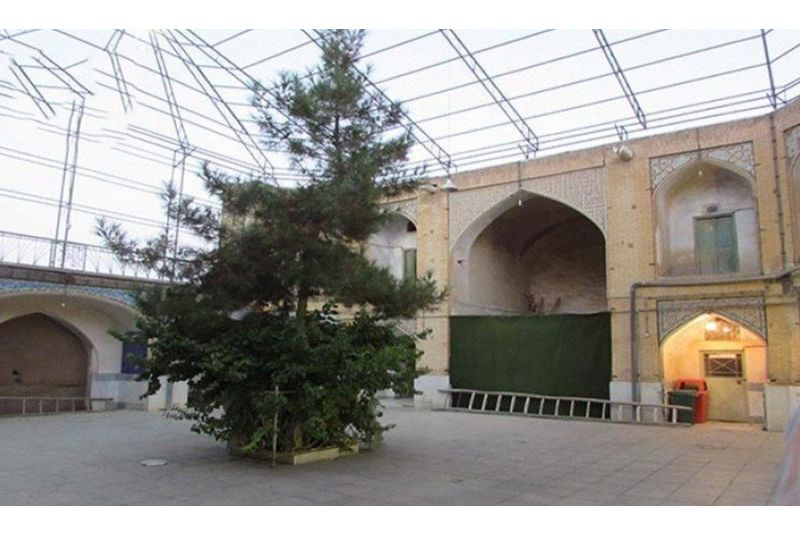
It has been established that the Qotbieh Mosque, which features an exquisitely tiled facade, porch, courtyard, chapel, and dome, was constructed under the rule of Shah Tahmasab I Safavid based on the inscription on the top of the structure. The headland and its inscription are now maintained at the Chehel Sotoun Palace, which is situated next to one of its walls.
This headland (door panel or Sardar) was relocated to Chehel Seton Palace about 50 years ago since it was at risk of demolition with the widening of Taleghani Street. Today, this lovely gateway and its inscription are visible to guests at the Forty Pillars Palace.
Headland's inscription was created in 905 AH and is inscribed in the calligraphy of Abu Saeed Emami on a white marbled tile with a lapis lazuli backdrop.
"The Qotbieh Mosque is listed as one of Iran's national monuments."
Mohammad Baqer Fesharaki and Mullah Asadollah Faradanebe, well-known Isfahan residents, served as imams in this mosque.
| Also might be interesting: Best 5 Star Hotels In Iran to Stay in 2023 + Pics
Bottom Line
Regarding historical monuments and architectural achievements, Iran is one of the wealthiest nations, and Isfahan is unquestionably highly precious. In addition to this city's unique structures and architectural designs, Isfahan's mosques are sure to astound any tourists. Eavar has extensively documented many of Isfahan's famous mosques in this post so that anybody interested in ancient structures or Iranian architectural design can learn more about them before visiting this fantastic city. I genuinely hope you have gotten the most out of this post.
Ask any questions you may have regarding the Isfahan mosques or any other well-known tourist destinations in the comments box below this page so that we can help you as quickly as possible.


Comment
Leave a Comment